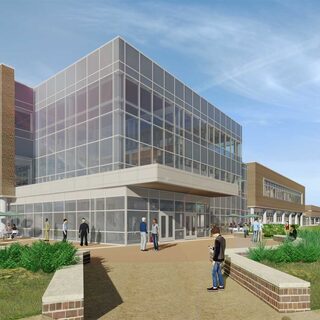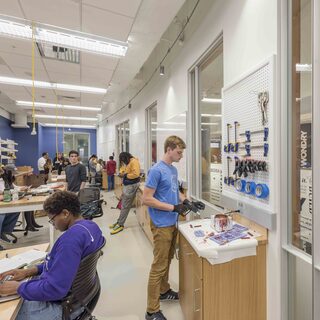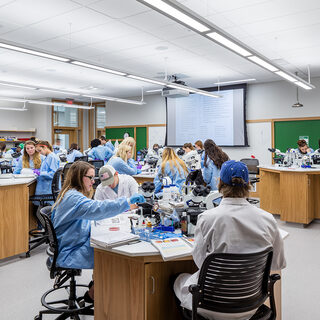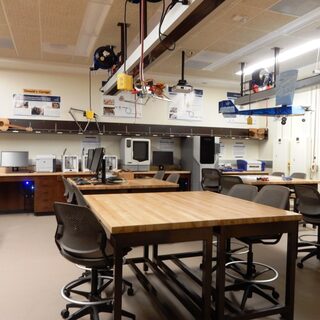Tradeline's industry reports are a must-read resource for those involved in facilities planning and management. Reports include management case studies, current and in-depth project profiles, and editorials on the latest facilities management issues.
Latest Reports
Eli Lilly Employs Shared Space and Innovative Infrastructure
Eli Lilly and Company embarked on a year-long process to create a new collaborative and flexible space model dubbed CoLAB. In order to achieve the flexibility they aim for, Lilly is employing the use of ceiling infrastructure and innovative fume hoods, the design of which ultimately saved hundreds of thousands of dollars. CoLAB’s purpose is to collocate previously separated groups into a new research campus, specifically stressing collaboration, innovation, and speed-to-market of new therapies. The initiative is designed to address constraints caused by both geographic separation and aging facilities in the Small Molecule Design and Development (SMDD) organization, the group that is responsible for the scale-up work that acts as the bridge between research and manufacturing.
Engineering and Science Building (ESB)
Vanderbilt University’s new Engineering and Science Building (ESB) brings the physical sciences and engineering together to expand interdisciplinary research in biomedical engineering, energy, and materials; recruit faculty in areas of nanotechnology and environmental engineering; and create a new undergraduate research-focused culture on campus.
Cornell Tech: An Island of Innovation in the Center of New York City
The visually stunning, environmentally sustainable Cornell Tech graduate school opened this September on New York’s Roosevelt Island—a 12-acre stretch of land in the middle of the East River between Manhattan and Queens—creating what is intended to be a leading hub for technology education and business innovation in the center of the city. The new school was developed in response to a competition announced in 2010 by former mayor Michael Bloomberg to develop an applied-sciences and technology campus that could diversify the city’s economy beyond its traditional finance, advertising, and media sectors. Ideally, this new institution will transform NYC into the Silicon Valley of the east.
Don & Cathy Jacobs Science Building
The Don & Cathy Jacobs Science Building at the University of Kentucky integrates multiple disciplines under one roof, for both teaching and research. The facility is designed to encourage discovery and support problem-based learning, with state-of-the-art undergraduate chemistry, biology, and neuroscience facilities; 12 technology-enhanced active learning (TEAL) environments; large tiered lecture halls; classrooms; and learning center spaces.
Maker Spaces that Mirror the Industry Engineering Design Process
Under the leadership of founding dean Chell Roberts, the Shiley-Marcos School of Engineering at the University of San Diego is revamping its engineering pedagogy and infrastructure to incorporate abundant maker experience. Since his appointment four years ago, Roberts has overseen a 7,000-nsf renovation creating space to house the three phases of the engineering cycle—ideate, prototype, and realize—that replicate the industry model. The aim is to produce graduates who can hit the ground running when they move into their first position in the real-world engineering workplace.





